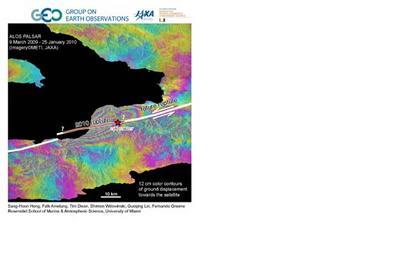According to the new data, the earthquake rupture did not reach the surface which is unusual for an earthquake this size. More importantly, the images confirm that only the western half of the fault segment that last ruptured in 1751 actually ruptured in the current earthquake. “We’re still waiting for the other shoe to drop,” says Tim Dixon, professor of geology and geophysics at the University of Miami Rosenstiel School of Marine & Atmospheric Science.
Dixon is looking at every bit of evidence to try to understand the possibility of another major quake hitting Port au Prince in the near future. “There’s a reasonable probability of another large quake, similar to the January 12 event, striking Port au Prince within the next 20 to 30 years,” Dixon says. “I’d like to see them re-locate critical infrastructure such as government buildings, schools and hospitals, farther north out of the danger zone.”
Source: University of Miami
For more information please visit: http://www.rsmas.miami.edu/pressreleases/20100208-haiti.html

